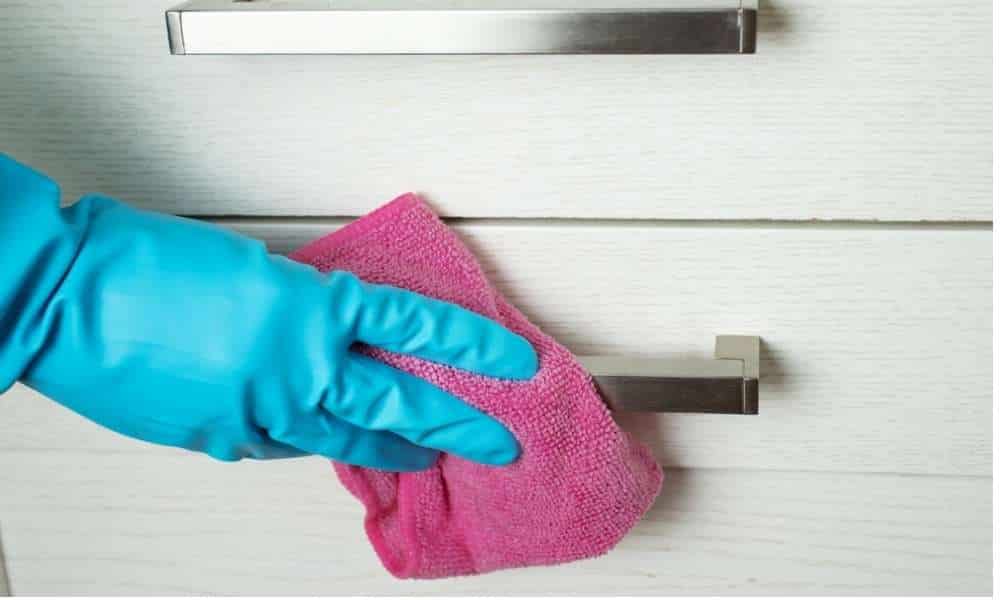Climbing outdoor stairs may also be hazardous if the steps get slippery from rain, ice, or even early morning dew. If you are worried your outdoor space is unsafe, finding out how to make outdoor steps non-slip is necessary. Everyone, from family to visitors, can trip on slippery steps and endure unfortunate accidents. Fortunately, there are easy and effective ways to add some traction to your steps to make them safer all year round. In this Guide we are learn how to make outdoor steps less slippery
Identifying The Causes Is Essential

Now before we get into how you can solve this problem, it is important to know why your outdoor steps are slippery in the first place. Once you understand the symptoms, knowing the root causes will help you pick the treatments that are most well-suited for you.
Weather Conditions: Rain, snow, and ice are the elements that create slippery surfaces.
Accumulated Debris: Leaves, moss, and algae build a slippery surface, especially on wood and concrete.
Step Material: Smooth stone, untreated lumber, And materials other than concrete do not provide natural traction to keep your feet safe.
Worn-Out Coatings: Over time, protective coatings will wear and leave a smooth somewhat slippery surface.
01. Applying Non-Slip Coating
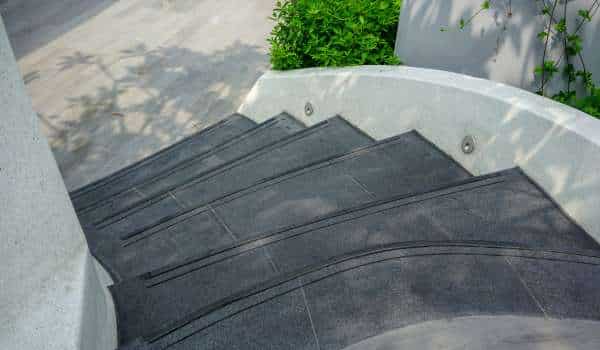
You know the causes of slipperiness, so let’s boost traction on those outside steps. One of the best anti-slip protection options is adding a non-slip coating designed to help you stick to your footing, wet or dry.
They usually fall somewhere between clear spray types and industry-excess coatings, so curious homeowners can find one that accommodates their steps-material and aesthetic. That wear, when you apply a non-slip coating will not only protect your steps but all of that also designates toughness protecting from the weather and other numerous things.
02. Using Anti-Slip Treads

Made from rubber, abrasive grit, or adhesive strips, anti-slip treads grip each step as you move up and down. Available in a variety of sizes, shapes, and materials. They are a top choice for those seeking a quick and easy solution, as they are almost ready to use right away.
They are especially handy in locations where it rains regularly or snows exceedingly and retain traction around slick surfaces. If you have slippery outdoor wooden steps, anti-slip treads provide an instant solution for safety and convenience.
03. Adding Textured Surfaces For Grip
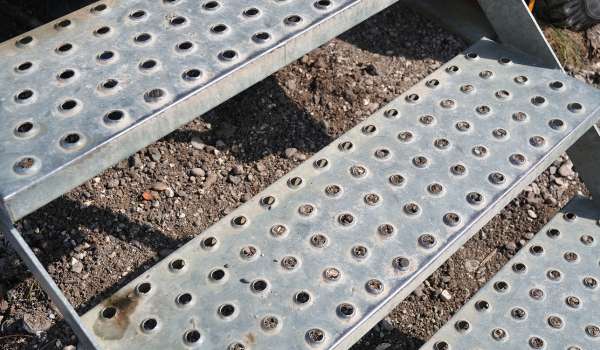
For more of a permanent fix to slippery steps, install textured surfaces for traction. Adding texture to the step surface can reduce slip and fall accidents during desirable runaway weather significantly! Textured surfaces can also be created by adding grip tape, stamping concrete with various patterns. Or embedding rough aggregates like sand or grit into the surface.
04. Grit Paint
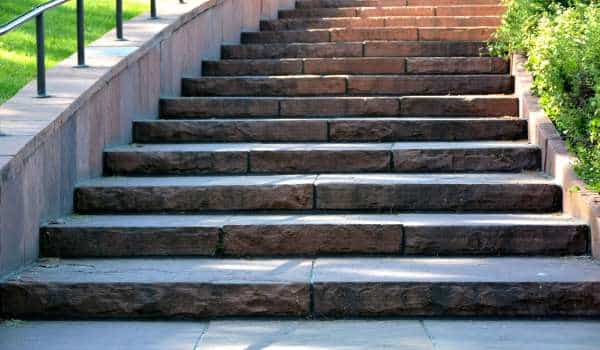
This paint that texture helps with traction on outdoor steps. This type of paint has an abrasive compound, commonly sand or other non-skid particles. Mixed in that provides a textured surface with slip-resistant properties after reapplying. Grit paint is useful in wet areas due to its durability in the elements, and long-lasting non-slip properties.
It comes in different colors letting you maintain the looks of your steps along with safety. This is because you are adding durable grit paint, needs little maintenance, and works well to prevent slips.
05. Self-Adhesive Tape
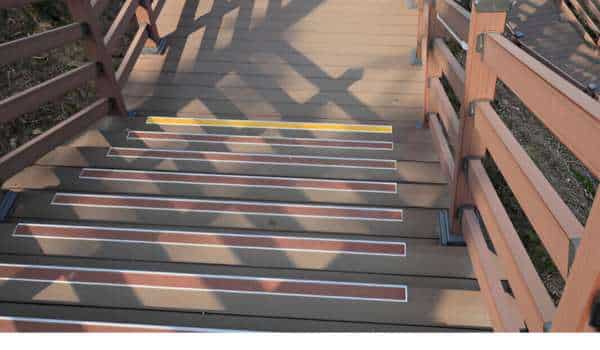
Textured self-adhesive tape can be applied to steps and driveways or other areas that may present a slip-and-fall hazard when wet. This is especially helpful for houses in locations that encounter rain or snow. As the level of moisture creates more risks.
06. Rubber Carpet Or Treads

Rubber treads are simply added to existing steps for a long-lasting, weatherproof and safe surface. They vary in sizes, colors, and textures, perfect for matching outdoor decor but function just the same. Also, rubber carpets include drainage features to prevent it from soaking in water and help to lower the chances of slipping.
07. Installing Handrails For Safety

Next, here are some of the key points:
- Support and Stability: Handrails offer important support to people as they climb flight of stairs, through sneakers or even ice.
- Accessibility: They provide easier access to outdoor steps for people of all ages and abilities, including children and the elderly.
- Durable Materials: Opt for materials such as metal or treated wood for durability against the outdoor environment and long-lasting functionality.
- Proper Height: Handrails should be installed at a height that is comfortable for the users. Which ranges between 34 to 38 inches from the heat of steps.
- Secure Installation: Handrails must be securely attached to the building to prevent them from moving or coming loose when in use.
08. Clearing Debris And Snow Regularly
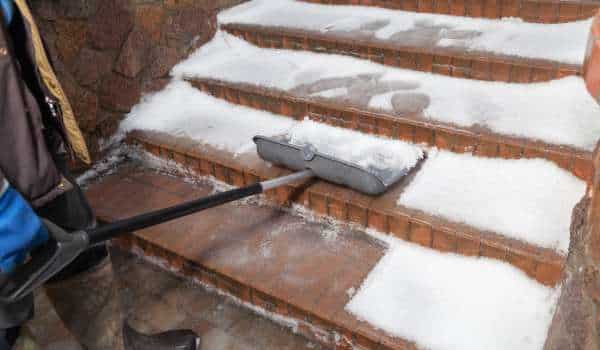
Leaves, dirt, and other accretionary materials can build up — causing slippery surfaces that contribute to falls. As the winter months arrive with snow falling quickly, problems can arise if the snow isn’t cleared away promptly.
Creating a habit of checking and clearing your steps helps keep them safe for everyone, especially children, seniors, and visitors. Having the right tools at your disposal can make this a lot easier, brooms for that which comes down from above and shovels or snowblowers for those white blankets covering the landscape.
09. Using Outdoor Rugs Or Mats Wisely
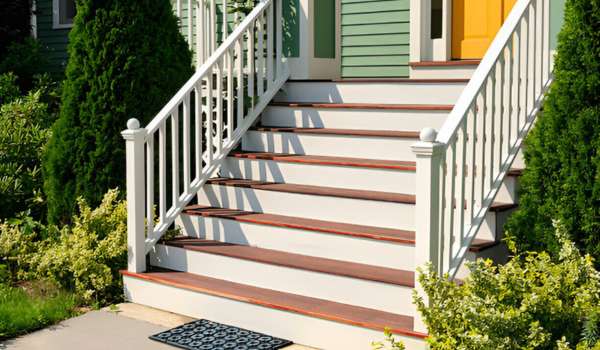
This is to offer a second layer of traction that helps prevent slipping and falling in the rain or ice. For outdoor rugs or mats, opt for a durable rug or mat made of weather-resistant material that can withstand elements when selecting.
Placement is important. If you use mats, place them at both the top and bottom of the steps or along pathways. This way, moisture and dirt will be trapped on the mat before reaching the steps. Cleaning these mats often will keep them both useful and looking good.
What To Put On Outside Steps To Prevent Slipping In Winter
Non-Slip Coatings: Applying non-slip coatings creates a textured surface that enhances grip, making steps safer in icy conditions.
Rubber Treads: Installing rubber treads provides a durable, slip-resistant surface that can handle snow and ice, significantly reducing the risk of falls.
Self-Adhesive Anti-Slip Tape: This tape is easy to apply and can be placed directly on steps to improve traction, making it ideal for quick fixes.
Outdoor Rugs or Mats: Strategically placing outdoor rugs or mats at the top and bottom of steps helps absorb moisture and provides additional grip.
Handrails: Installing handrails offers support for individuals navigating steps, making it easier to maintain balance during slippery conditions.
De-Iicing Agents: Using salt or other de-icing products can help melt ice on steps, reducing slipperiness and improving safety.
Advantages Of Fixing Slippery Outdoor Stairs
Increased Safety: The most significant benefit is the reduction in slip and fall accidents. By improving traction, you create a safer environment for family members, guests, and anyone who uses the stairs.
Enhanced Accessibility: Making outdoor stairs safer ensures that individuals of all ages and abilities can navigate them with confidence, promoting inclusivity in your home.
Improved Property Value: Well-maintained and safe outdoor areas contribute to the overall appeal of your property, potentially increasing its value and attractiveness to prospective buyers.
Reduced Liability Risks: By addressing slippery stairs, you lower the risk of accidents that could lead to injuries and subsequent liability claims, protecting yourself from legal issues.
Increased Durability: Many solutions for fixing slippery stairs, such as non-slip coatings and rubber treads, can also protect the underlying materials from wear and damage caused by ice and moisture.
Aesthetic Appeal: Enhancements made to outdoor stairs not only improve safety but can also elevate the overall look of your property, creating a more inviting atmosphere.
Conclusion
Using effective approaches such as a non-slip layer, grip strips. And proper drainage will help homeowners minimize the possibility of slip-ups. An added layer of safety is the result of regular maintenance from debris removal to seasonal treatments wherever applicable, particularly on outdoor steps. Also, choosing the materials so it will have a better grip can help it be a durable solution too. Act today to protect your garden and keep yourself and your guests safe from harm.
Faqs
How Often Should I Maintain Outdoor Steps To Prevent Them From Becoming Slippery?
Ideally, you should inspect and clean your outdoor steps at least once a week, especially during the fall and winter months when debris and snow accumulation are more likely. After heavy rain, snow, or storms, check your steps immediately and clear any leaves, ice, or snow.
Are There Any Natural Methods To Make Outdoor Steps Less Slippery?
So yes, there are indeed several natural ways one can solve this slipperiness problem on outdoor stairs. But one of the best options is sand or sawdust, which can be spread on steps to give added grip. Also, make a diluted vinegar solution to wipe the steps since vinegar has natural anti-slip abilities.
Can I use a regular carpet on outdoor steps?
People do not recommend regular carpet for outdoor steps, as it may not withstand the elements and can become slippery when wet.
How do I install rubber treads on my outdoor steps?
Clean the surface of the steps thoroughly, measure and cut the treads to fit, and peel off the backing to adhere them securely to the steps. Follow the manufacturer’s instructions for the best results.
What are some natural de-icing agents I can use on my steps?
Natural de-icing agents include sand, sawdust, or kitty litter, which can provide traction without the harsh effects of salt. These options are effective for improving grip on slippery surfaces.




